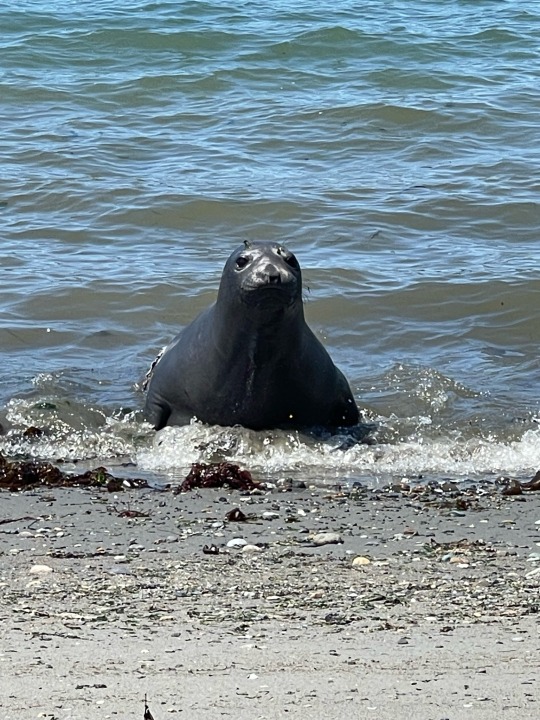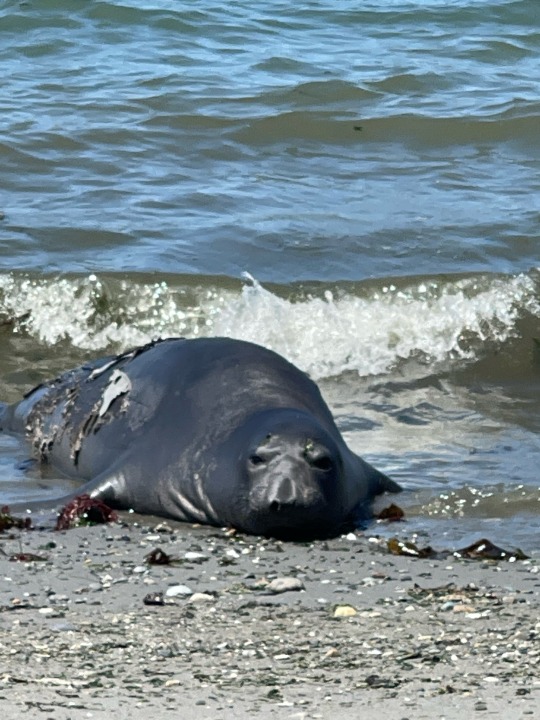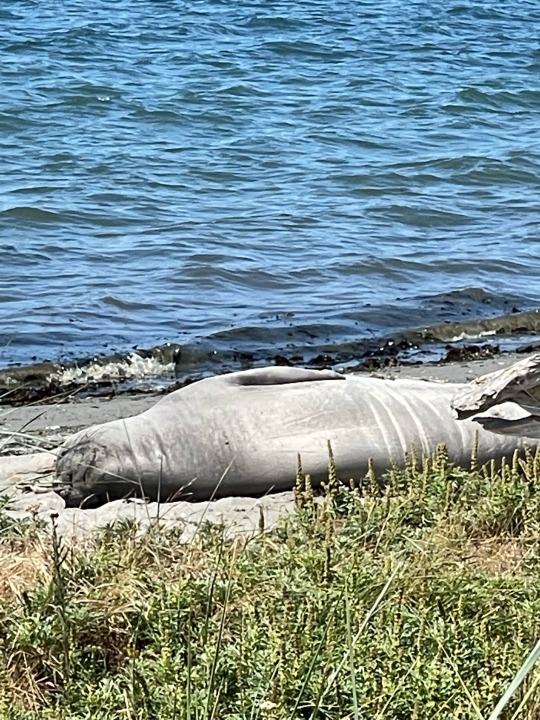#northern elephant seal
Text
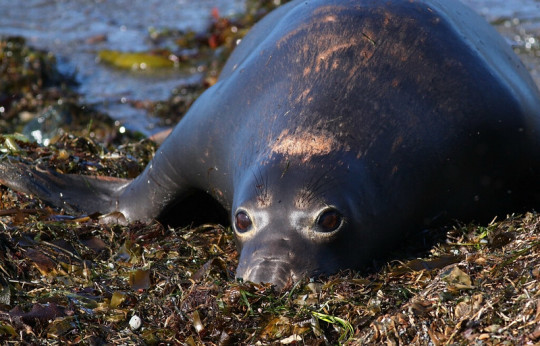
A Northern elephant seal (Mirounga angustirostris) coming ashore in San Simeon, California, USA
by Robyn Waayers
#northern elephant seal#seals#pinnipeds#mirounga angustirostris#mirounga#phocidae#pinnipedia#carnivora#mammalia#chordata#wildlife: california#wildlife: usa#wildlife: north america
1K notes
·
View notes
Text
My favourite kind of convergent evolution is when mammals just get Big Snoots

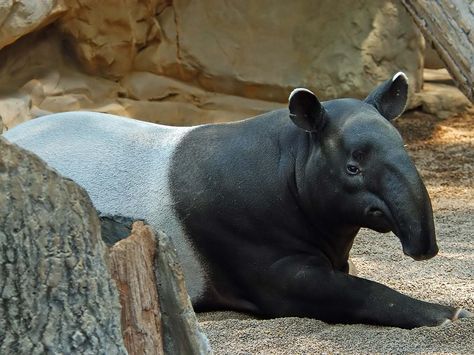

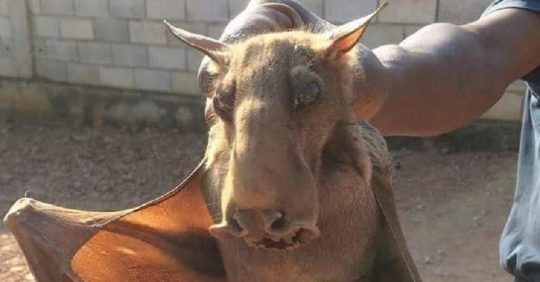

Peak fitness.
1. Saiga Antelope, Saiga tatarica
2. Malayan Tapir, Tapirus indicus
3. Northern Elephant Seal, Mirounga angustirostris
4. Hammer–headed Bat, Hypsignathus monstrosus
5. Black and Rufous Elephant Shrew, Rhynchocyon petersi
#saiga antelope#malayan tapir#northern elephant seal#hammer headed bat#black and rufous elephant shrew#animals#mammals#evolution
105 notes
·
View notes
Text

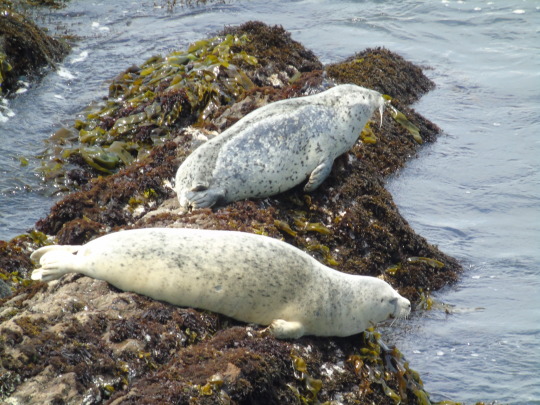
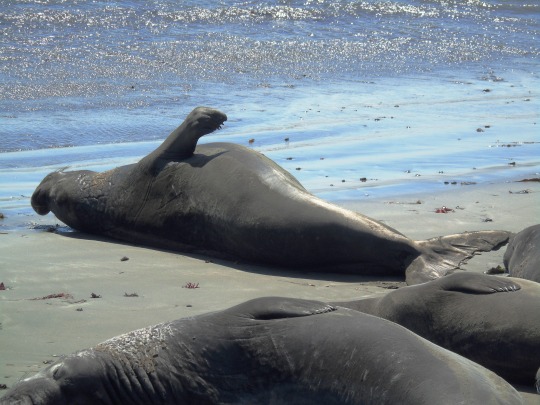

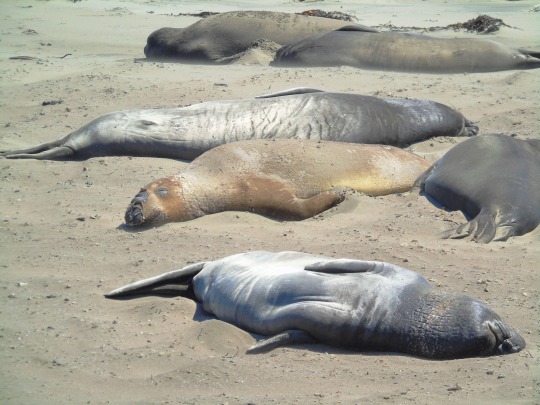
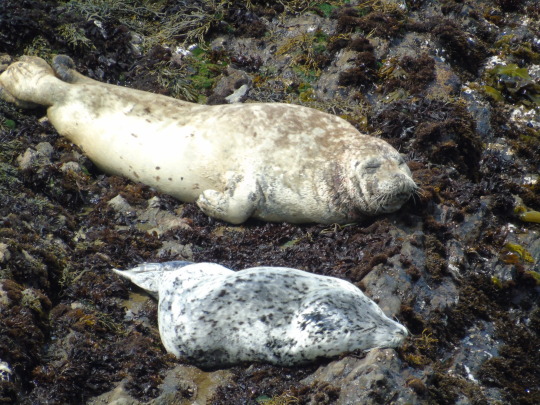
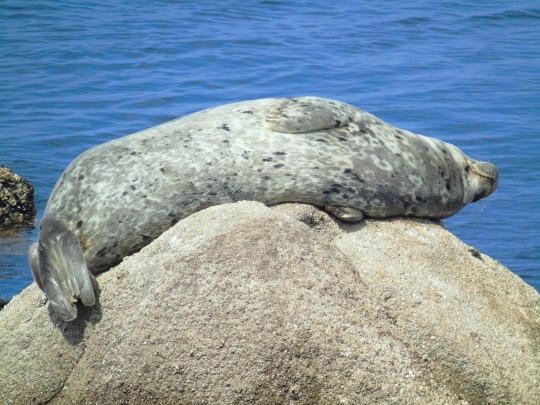
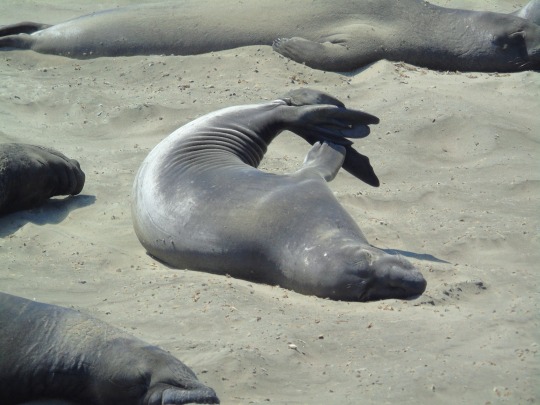
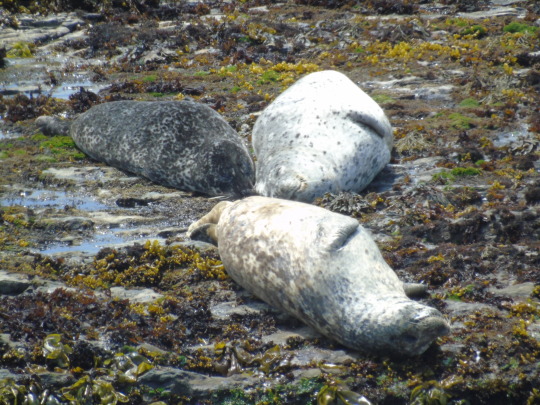









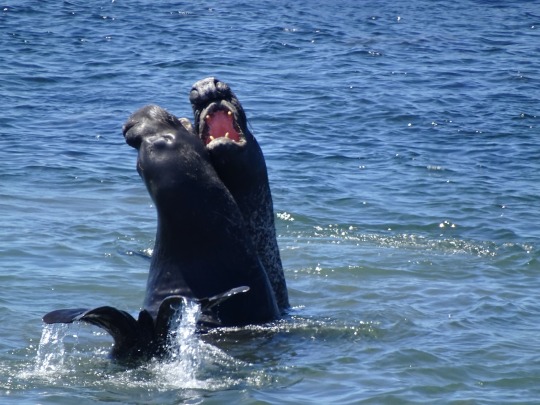





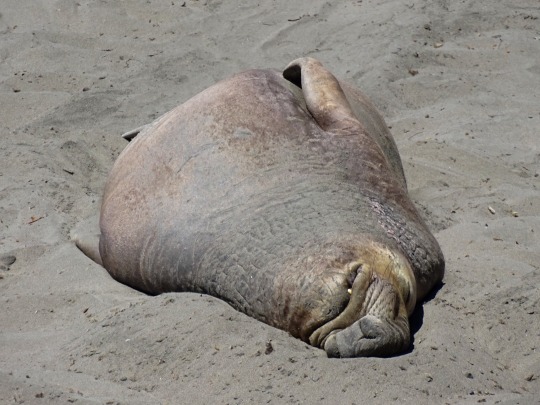
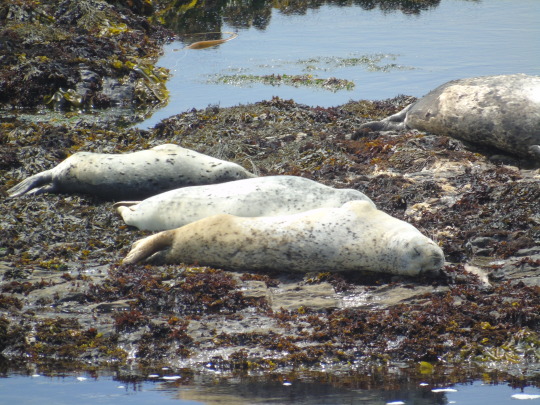

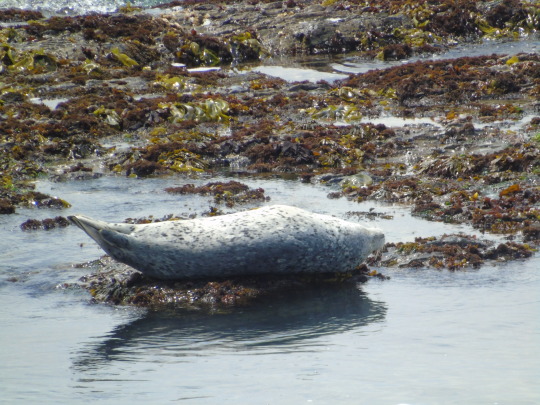
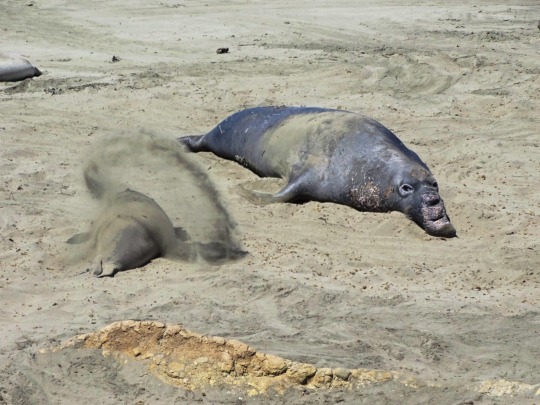
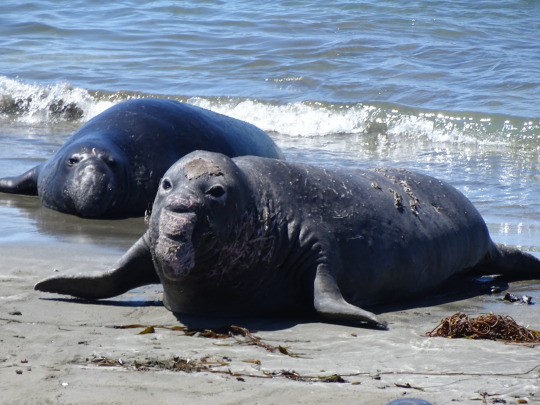
International Day Of The Seal
International Day of the Seal takes place on March 22. It is a day set aside to raise awareness about seal conservation around the world. It’s also a day for us seal lovers to honor this amazing sea mammal. Seals are not only adorable and attractive, but their presence in the world today has a significant impact. They are also the most targeted marine mammal on the planet. These creatures are in danger of soon becoming extinct. Humans have always posed a significant threat to them, as people capture them for feed, blubber, or pelts. As a result, this day is observed to emphasize the importance of preserving their population.
History of International Day Of The Seal
This international holiday was established in 1982. Since then, the holiday has been observed yearly on March 22. The total number of seal species was already declining at the time. Seals were increasingly becoming victims of humans. This is because humans hunted seals for their pelts, blubber, and meat. To put an end to this brutality, the day was proclaimed the “Day of the Seal.” The United States Congress established the worldwide holiday to raise awareness among Americans about the plight of seals. They developed several projects to raise awareness about the importance of protecting seals.
A seal is classified as a pinniped, which means “fin-footed” in Latin. The walrus and sea lion are two other pinnipeds. Seals are distinct from other pinnipeds in that they do not walk with their flippers. They frequently move about on their bellies when on land. Their flippers assist them to move quickly in the water. Seals are also calmer and smaller than sea lions and walruses.
Seals are located around the north and south poles. They are preyed upon by predators and hunters. This has put their population at risk. This day was established to raise awareness about how they might be saved.
This day is observed all over the world. Although seals dwell in the Arctic Circle and Antarctica, millions of people around the world adore them, and so this holiday is observed globally.
International Day Of The Seal timeline
1811 Pinnipedia
Johann Karl Wilhelm Illiger names both a clan and an order Pinnipedia.
1886 The Extinction of the Seal
The animal is considered extinct until a little group is discovered near the Yucatán Peninsula.
2001 The Link Between Sea Lions and Seals
Genetic analysis reveals that the north fur seal is more closely linked to many sea lion species.
2021 Recognition By the I.U.C.N.
Thirty-six pinniped species are recognized by the International Union for Conservation of Nature (I.U.C.N.).
International Day Of The Seal FAQs
Seals descended from what animal?
The earliest progenitors of seals and sea lions were mammals that evolved from land to sea. The ocean began to cool around 36 million years ago, near the end of the Oligocene, causing major changes in ocean circulation.
Is the seal a friendly creature?
Seals look attractive and sociable, which they are. Most zoos and marine attractions portray seals as trainable, clever, and human-friendly.
Do seals have fur?
Northern fur seals have the second thickest fur on the planet, with 300,000 hairs per square inch.
How to Observe International Day Of The Seal
Attend a public awareness event
Watch a documentary about seals
Visit a seal exhibit zoo
During International Day of the Seal, many naturalist organizations and zoos host awareness events. Attend a presentation to learn more about these wonderful creatures.
There are numerous videos and reading resources available about seals and their habitat. Spend the day learning about how climate change affects these seals.
Seals are related to sea lions and walruses, which live in the Arctic Circle and Antarctica. However, you don't have to travel to the poles to meet these magnificent creatures. To celebrate the festival, you can visit a zoo and learn about them.
5 Interesting Facts About Seals
There are various species
Their skin helps with temperature
They can detect prey
They live up to 30 years
They are heavier than us
There are 33 kinds of seals.
Blubber is the layer of fat beneath the skin of seals that keeps them warm in frigid water.
A seal’s whiskers aid in the detection of prey in murky water.
Their life expectancy is 25 to 30 years.
Smaller seals weigh 100 pounds, while the largest weigh more than 7,000 pounds.
Why International Day Of The Seal is Important
It’s a week to achieve something worthwhile
It encourages study
It encourages conservation
All animals are important. International Day of the Seal allows us to perform important conservation work and identify solutions to help the planet.
International Day of the Seal encourages people to learn more about seals. It is a means of making people more aware of their place in the larger scheme of things.
The importance of conservation of vulnerable animals is emphasized on this day. Contributions to this cause are encouraged.
Source
#Point Arena#Monterey#Elephant Seals of San Simeon#habor seal#USA#summer 2022#2017#Northern elephant seal#Pacific Ocean#fauna#animal#Elephant Seal Vista Point#wildlife#International Day Of The Seal#22 March#InternationalDayOfTheSeal#InternationalSealDay#California#West Coast#original photography#tourist attraction#flora#landmark#nature#beach#travel#vacation
3 notes
·
View notes
Photo
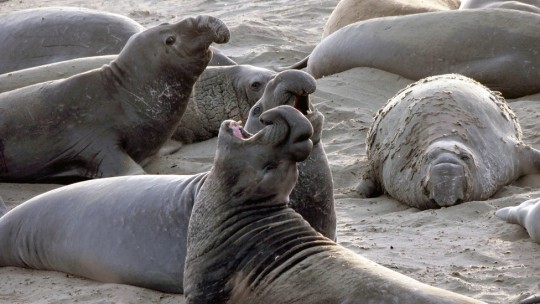

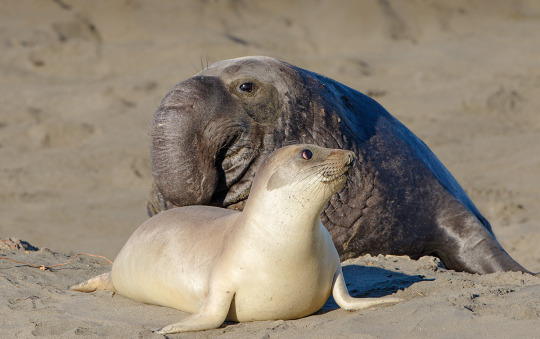
Elevating the Elephant Seal
Found all along the Pacific coast, from Alaska to Antarctica, elephant seals are famous for their size, aggression, and unusual noses. There are two species of elephant seal, both belonging to the true seal family Phocidae. The northern elephant seal (Mirounga angustirostris), as its name suggests, is dispersed along the northern coasts of North America, from the American state of Alaska all the way down to Baja California in Mexico. Southern elephant seals (Mirounga leonina) reside in Antarctic and sub-Antarctic waters up to the southern most regions of Chile and Argentina in South America. Both species migrate twice a year. The rest of the year is spent foraging in the deep waters of the Arctic or Antarctic, respectively, and these trips can take anywhere from 10,000km to 20,000, making them one of the longest migrations of any marine mammal.
The main difference between northern and southern elephant seals is their size. A male northern elephant can weigh between 1,500 and 2,300kg, while females are much smaller at 400 to 900 kg. M. angustirostris also has a shorter nose than its southern cousin. M. leonina females are similar in size to the northern elephant seals, at 400 to 900 kg, but males can easily reach up to 4,000kg, making them the largest species of seal on the planet. Both elephant seal species are generally brown in color and have only a short, bristly coat of hair. They have no ears, distinguishing them from other pinnipids like sea lions. The males, or bulls, of both species also have pronounced nose called a proboscis which serves to amplify loud mating or threatening calls.
Elephant seals come ashore twice a year in groups called colonies. In the summer, individuals gather on land to go through a ‘catestrophic molt’. During this time, the fur and the top layer of skin peel from the body. This is a necessary process because when at sea, blood is not circulated to the skin in order to keep elephant seals warm. Because of this, they are also unable to grow new hair or skin continuously. When the outer layers of skin and hair wear down or become ragged, individuals travel to traditional breeding grounds and take a month to shed their outer layers and grow a new protective coat.
From December to March, dominant males congregate at breeding grounds to compete for mating rights. The bulls are very aggressive, and fight by slamming their bodies together and raking each other with their sharp canines. Once a bull has established dominance on a beach, other males typically leave, though some may try to sneak back in to mate when the alpha bull isn’t looking. Each dominant male controls a harem of 40 to 50 females. Each female, or cow, only gives birth to one or two pups after a gestation period of 10 to 12 months. Only a few days after giving birth, she is ready to mate again.
In the meantime, the mother nurses her pup almost constantly for about a month. During this time, the female does not leave the beach to search for food, and both she and the bulls lose up to a third of their body weight. After about a month the mother weans her pup off her milk. However, some pups are “super weaners” and will search out another female-- usually one who has lost her pup-- and nurse from her for as long as possible. This gives the pup a significant size advantage: pups that are successfully weaned at 6 weeks weigh only 160kg, while super weaners can weigh up to 270 kg. The advantage of being this big is in the blubber: elephant seals require large amounts of excess fat as an energy source when food is scarce and to keep them warm when they forage in the cold waters of the northern or southern Pacific Ocean. However, the effectiveness of this strategy for survival has yet to be fully determined. The average lifespan of M. angustirostris is 9 years, while M. leonina can live up to 21 years old, though in both species males tend to die much sooner than females.
Outside the molting and mating seasons, elephant seals spend up to 90% of their lives in the water, usually alone. Foraging migrations require long, deep dives into the cold Arctic or Antarctic oceans to search for squid, rays, small sharks, and schooling fish. Some of these dives are the deepest recorded for any non-cetacean mammal at up to 1,550m below the surface. To reach these depths, elephant seals can hold their breath for almost two hours, although the average length of a dive is 20-60 minutes. Due to their large size, adult elephant seals have few predators. Some sharks, like great white sharks (Carcharodon carcharias) and southern sleeper sharks (Somniosus antarcticus) will go after adults when desperate. More common is predation on elephant seal pups; killer whales (Orcinus orca), leopard seals (Hydrurga leptonyx), and New Zealand sea lions (Phocarctos hookeri) will all hunt young pups when no parents are nearby to defend them.
Conservation status: The IUCN has rated both elephant seal species as Least Concern. In the late 1800s, northern elephant seals were thought to be hunted to extinction but a population of 20-100 individuals was discovered on Guadalupe Island off Baja California. Southern elephant seals were also hunted, but to a lesser extent. M. angustirostris and M. leonina populations are now well in the hundreds of thousands, though the population of southern elephant seals is declining once more due to disruption of their primary food sources.
Photos
Taiki Adachi
Nick Ut
Steve Zamek
If you like what I do, consider buying me a ko-fi!
#northern elephant seal#southern elephant seal#carnivora#phocidae#elephant seals#seals#pinnipeds#carnivores#mammals#coasts#coastal mammals#open ocean#open ocean mammals#pelagic fauna#pelagic mammals#north america#western north america#south america#western south america#antarctica#pacific ocean
79 notes
·
View notes
Text
LOCAL WALKS: In the Middle
LOCAL WALKS: In the Middle
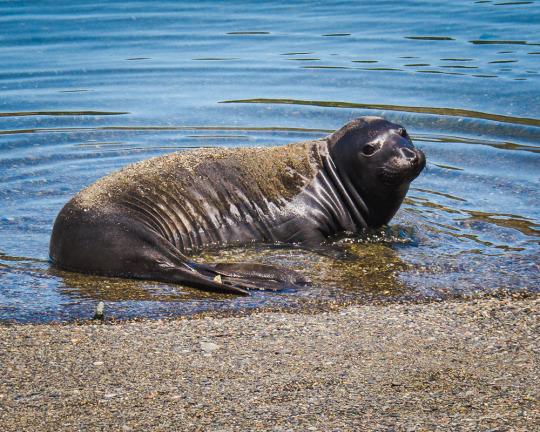
View On WordPress
26 notes
·
View notes
Text

Northern Elephant Seal (Mirounga angustirostris)
taken on the East End of Catalina Island
status: least concern
It may be hard to spot but there is an Elephant seal on that rocky beach! It was hanging out quite close to the California Sea Lion colony but was the only one of its kind there that we noticed. At first glance this seal may look worse for wear but its molting! Once a year these enormous creatures shed all their fur at once in a 'catastrophic molt' and end up looking quite ragged during the process.
#Northern Elephant Seal#Seal#Elephant Seal#animal#wildlife#animal photography#catalina island#photo#photography#canon#canon 6D mark ii
3 notes
·
View notes
Text
Same-sex activity is often claimed to be a way that younger animals practice or "rehearse" heterosexual courtship or mating, or a way for individuals to gain sexual "experience" that will improve their future breeding success.⁴³ While it is possible that homosexuality could provide this "service", it is unlikely that this is its major function.
43. This has been suggested for species such as Stumptail Macaques, White-faced Capuchins, Killer Whales, Northern Elephant Seals, West Indian Manatees, Giraffes, Gray-headed Flying Foxes, Ring-billed Gulls, Black-headed Gulls, Ocher-bellied Flycatchers, Guianan Cock-of-the-Rock, Calfbirds, Superb Lyrebirds, and Adélie Penguins. In addition, in some species where homosexual behavior is classified as "play", the implication is also that it functions as practice for "real" (i.e., heterosexual) activity.
"Biological Exuberance: Animal Homosexuality and Natural Diversity" - Bruce Bagemihl
#book quote#biological exuberance#bruce bagemihl#nonfiction#same sex activity#practice#rehearsal#heterosexual#courtship#mating#experience#success#homosexuality#gay#lesbian#stumptail macaque#white faced capuchin#killer whale#orca#northern elephant seal#west indian manatee#giraffe#grey headed flying fox#gray headed flying fox#ring billed gull#black headed gull#ocher bellied flycatcher#guianan cock of the rock#calfbird#superb lyrebird
0 notes
Note
Begging you for some pinnipeds any pinnipeds please
Piebald Northern fur seal
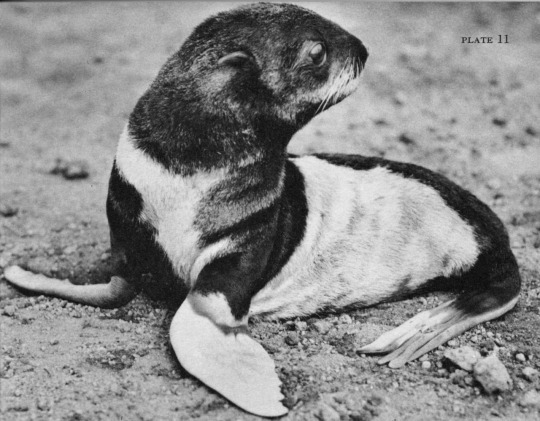
Atypical colored Antarctic fur seal! With the orange, white, and grey they look calico.
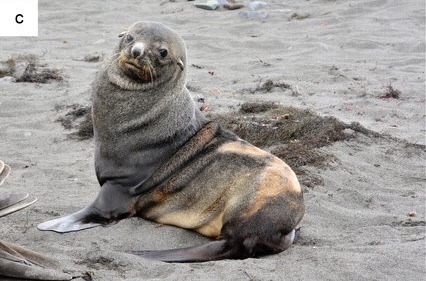
Leucistic Antarctic fur seal

Interesting gang of Antarctic fur seal, one is leucistic and one almost looks brindle?

Leucistic southern elephant seal

Northern fur seal labeled as albino and partial albino (leucistic?) by some sources. NOAA says albino and they are experts.

Albino harbor seal
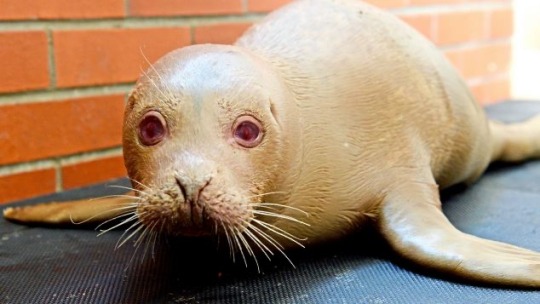
Albino ringed seal
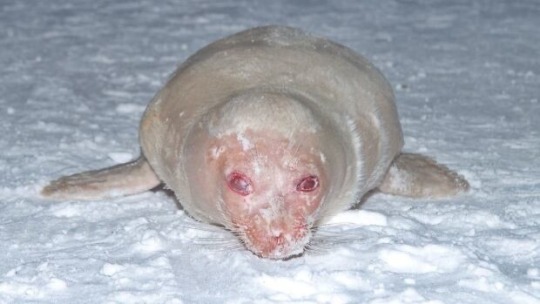
Melanistic grey seal
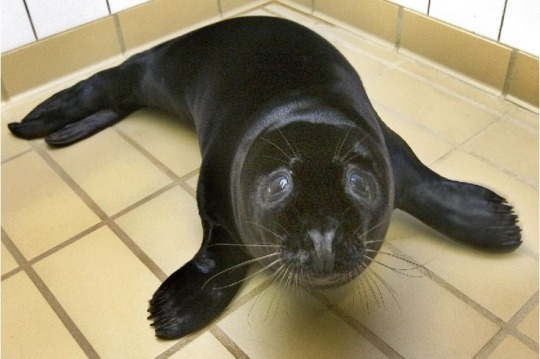
#color mutation#albino#albanisim#melanistic#melanism#piebald#leucism#leucistic#oddball#northern fur seal#Callorhinus ursinus#antarctic fur seal#Arctocephalus gazella#harbor seal#Phoca vitulina#ringed seal#Pusa hispida#southern elephant seal#Mirounga leonina#grey seal#Halichoerus grypus#ask
626 notes
·
View notes
Text
While they may not look alike, did you know that seals are thought to be most closely related to bears, weasels, and otters? 🦭
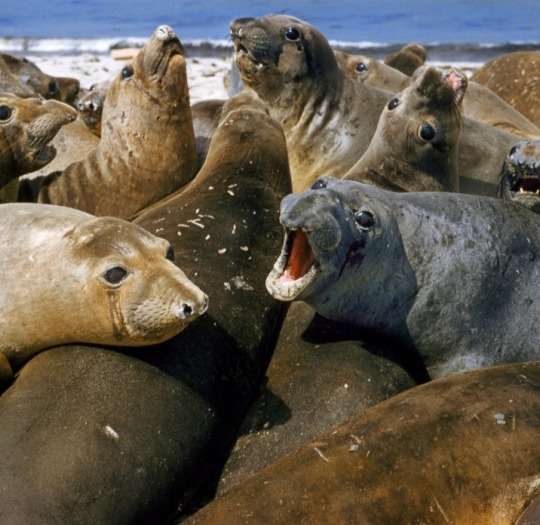
📸 1/4: Barking elephant seals, Mirounga angustirostris, bask in a huge pile on a beach.
(National Geographic Image Collection / Bates Littlehales)
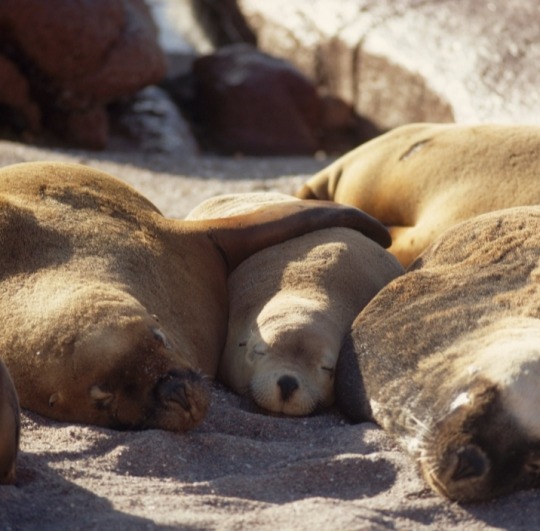
📸 2/4: Seals sleep in a tight group on the beach.
(National Geographic Image Collection / Joseph J. Scherschel)

📸 3/4: A colony of Steller's sea lions (Eumetopias jubata, also called northern sea lions) on a rocky islet in Hecate Strait.
(National Geographic Image Collection / Sam Abell)

📸 4/4: California sea lions, Zalophus californianus, lounge on a rock in British Columbia's Great Bear Rainforest.
(National Geographic Image Collection / Anne Farrar)
#seals#elephant seals#Mirounga angustirostris#sea lions#Stellar's sea lions#northern sea lions#Eumetopias jubata#California sea lions#Zalophus californianus#National Geographic#animals#marine mammals#pinnipeds#fin-footed
42 notes
·
View notes
Text
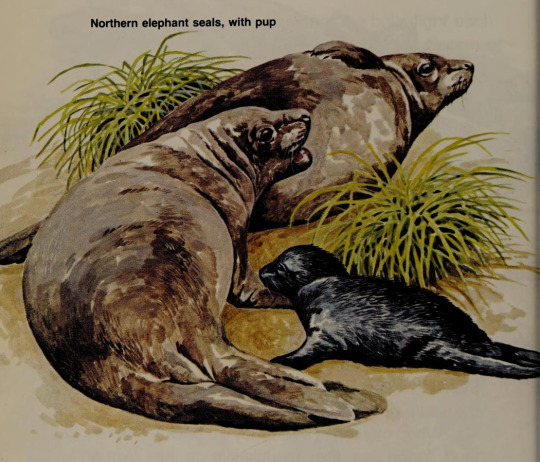
Seals. Written by Alice Fields, illustrated by David Astin. 1980.
229 notes
·
View notes
Photo
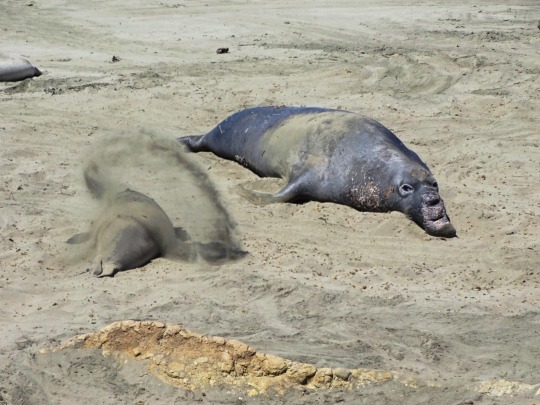
Can you stop that?
What do you think about my pic?
#What do you think about my pic?#Elephant Seals of San Simeon#Elephant Seal Vista Point#Northern elephant seal#free admission#beach#sand#original photography#wildlife#animal#tourist attraction#landmark#Mirounga angustirostris#San Luis Obispo County#fauna#male#young one#summer 2022#West Coast#California#annoyed#photo of the day
23 notes
·
View notes
Text

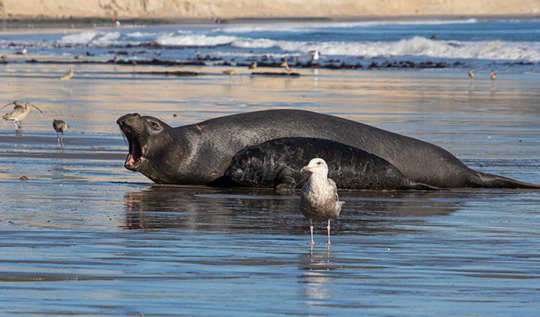
Altruism is the behavioral assistance of another in need, has ancient origins in mammalian evolution. Recently, marine ecologists has observed for the first time, an act of altruism performed by a male northern elephant seal (Mirounga angustirostris), when trying to protect a young pup in distress from drowing at high tide at a colony at Point Reyes National Seashore, California.
Researchers noted the high tide had pulled the pup into the water and it was yelling for help. The male reacted and entered to the water, it swam to the pup and very gently nudged it to shore, near to where its mother was waiting. Marine ecologists did not report the male attempted to gain an approach or interest in the mother of the pup. Male altruism is rarely seen in marine mammals, as sea lions and elephant seals, and more examples may emerge as more efforts were focused on breeding colony observations.
Photographs: Above: Male helping the pup from drowing. Below: mother and her pup reunited after the event.
Reference (Open Access): Allen et al., 2024. An observation of potential altruism by a male northern elephant seal (Mirounga angustirostris). Marine Mammal Science.
491 notes
·
View notes
Text
2023 LOOKBACK
I’ve been all over the map this week about what to post next. There are more photographs from Iceland that I plan to share…but now or later? I’ve been getting outdoors often enough to put together a collection of photos that I titled, “Lightwater.” Then I changed gears and started another post that pairs older photos from New York City with recent images from nature. The idea is to compare and…
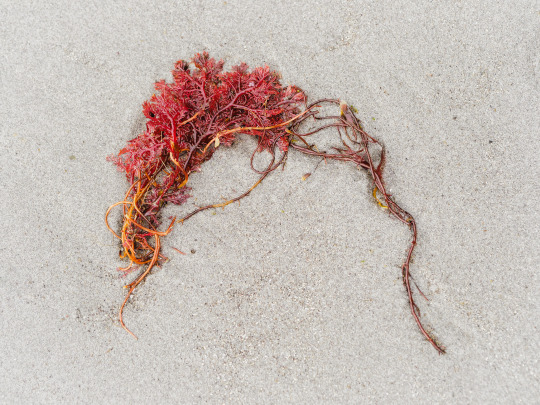
View On WordPress
0 notes
Text
Life’s a beach

At least that’s true for northern elephant seals along the central coast of California during breeding season.

Between December and March, pregnant moms give birth to and raise adorable little pups, while the bulls are busy battling and honking for territory and harems. All the hus-seal and bus-seal makes for a busy beach… and LOTS of napping!
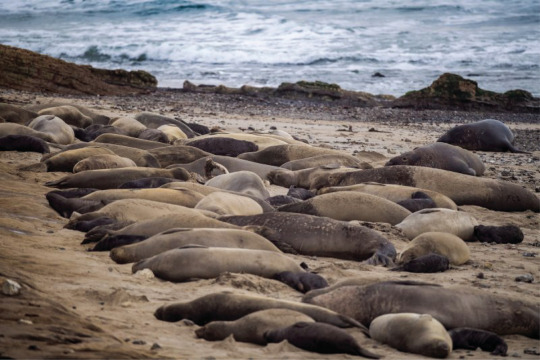
Don't get us wrong, crowded beaches are a good thing! Thanks to protections in Mexico and the United States, a species once on the brink of extinction is thriving today. That seartainly gets our seal of approval!
#monterey bay aquarium#sand baths are important for sealf care#whats the difference between a seal and a sea lion?#an electron#seal your lips you blubber mouth#ok fur seal with these seally jokes#ok seal you later
1K notes
·
View notes
Text
Gray, Harbor, and Northern Elephant Seals engage in a wide variety of nonprocreative heterosexual behaviors.
"Biological Exuberance: Animal Homosexuality and Natural Diversity" - Bruce Bagemihl
#book quote#biological exuberance#bruce bagemihl#nonfiction#gray seal#halichoerus grypus#harbor seal#phoca vitulina#northern elephant seal#mirounga angustirostris#nonprocreative#heterosexual
0 notes
